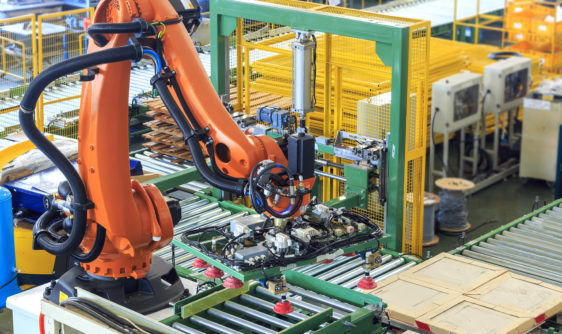
Warehouse Automation: Why it’s the Future
What is it?
Whether you work in material handling, order fulfillment or supply chain industries, there is no doubt that you’re aware of the drastically evolving technological advances that are changing the way that warehouses operate. Warehouse automation is the application of specialized equipment to perform repetitive processes which previously required labor. Every warehouse has different needs and processes. How do you know if automation is the right move for your warehouse?
What parts of the warehouse can be automated?
Software
- Warehouse automation begins with optimizing your warehouse system from the top down. By implementing a warehouse management system (WMS) software solution, companies can optimize their inventory processes and provide visibility and management throughout the entire order fulfillment process.
- A WMS provides access to real-time accurate inventory count which is crucial in today’s fast-paced warehousing/eCommerce industry.
- WMS also reduces communication delays by making all information visible to the other systems throughout the process.
Picking automation
- Automated warehouse picking is the implementation of robotic or semi-robotic technologies that enhance the work of human pickers. Whether they are robots that take the product from picking areas to packaging or a pick module that brings the boxes to the picker and then on to packaging, these two systems are implemented to increase picking speeds and reduce errors.
- Having such a system in place can reduce walking time by shortening picking routes.
- Pick-to-Light systems can improve pick rate productivity and accuracy by 30-50%. (Source)
Sorting
- When there are frequent direct-to-customer orders, it is optimal to have an automated sorting system in place that easily handles higher throughputs of packages/bags and sorts them to the correct ship lanes or destinations.
- Many different types of sortation systems are on the market today, from activated roller belts to shoe sorters. Both have their niche markets, but the goal is to quickly scan and sort packages/bags to destination lanes to keep up with the high throughput demands of today’s distribution centers.
Barcode labels and scanning automation
- Tags and scanners are great tools designed to make product identification quickly and accurately. Scanners today can easily read damaged or partially covered bar codes and handle extreme angles and various locations on boxes or bags.
- Handheld barcode scanners help pickers identify what to pick and which box or tote to place in.
- AGVs or Automated Guided Vehicles are driverless vehicles that use wires, magnets, lasers or cameras to navigate materials around a facility.
- Safety is a key benefit of AGVs by protecting employees in areas that would have been high forklift traffic areas or to prevent humans from walking material around a facility.
- AGVs can easily be integrated with other warehouse automation systems including conveyors and sortation devices.
- More and more forklifts and pallet jacks are becoming autonomous in today’s work environments.
Best practices for warehouse automation
Management
- Strong leadership is essential in automating a warehouse, especially one that starts out from an entirely manual process.
- Management must be set in place to oversee daily production, coach teams and set goals for constant improvement.
Training
- When implementing new warehouse automation solutions, some resistance to change is inevitable. Ease into the transition by providing a training program for employees and ensuring those employees’ their jobs will not be replaced by automation but their efforts will be supplemented.
- Make your employees certain that the new equipment will support and assist them in their goals.
Employee Motivation
- Gainsharing is an employee bonus incentive system in which increased worker productivity translates to higher compensation. This method is great for motivating workers to do their best at all times.
- Allowing music to be played during work hours not only could reduce mistakes but also improve the emotional wellbeing of workers.
- Employee of the week/month is another way to acknowledge the hard work of your team and boost morale.
Processes and Systems
- Try not to fall into the mindset that “automation does all the work and thinking”. If proper processes are not implemented and followed through on, then even the best technology will fail.
- Identify the pain points in the operation and begin the automation process there.
- Consult the analytical or implementation team to get buy-in on the least intrusive transition methods.
The physical warehouse
- Organization and use of vertical space are essential to optimizing traffic flow. Consider using warehouse racks and shelves for storing and vertical lifts for retrieving or a vertical storage system (VLM).
- Assess your warehouse floor plan. Identify the best ways to maximize available space, minimize handling of goods, enable easy access to goods, and optimize overall working space.
- Organize your warehouse to reduce travel time by utilizing pickers, forklifts or robots.
- Place your best selling merchandise closest to the packing area.
Automation technology
- While collecting data is an integral part of succeeding at warehouse automation, you must be able to analyze and track that data in order to grow your business.
- Incorporating real-time analytics will allow you to identify growth opportunities to better streamline your processes.
Why it’s the future
Although warehouse automation is a substantial investment, it is unsurpassably the most essential way to reduce labor demands, enhance accuracy and improve efficiency. In addition to making the employees’ job easier, it also benefits the customer by reducing incorrect picks or missed items from their orders and increase the speed at which orders can be processed.





